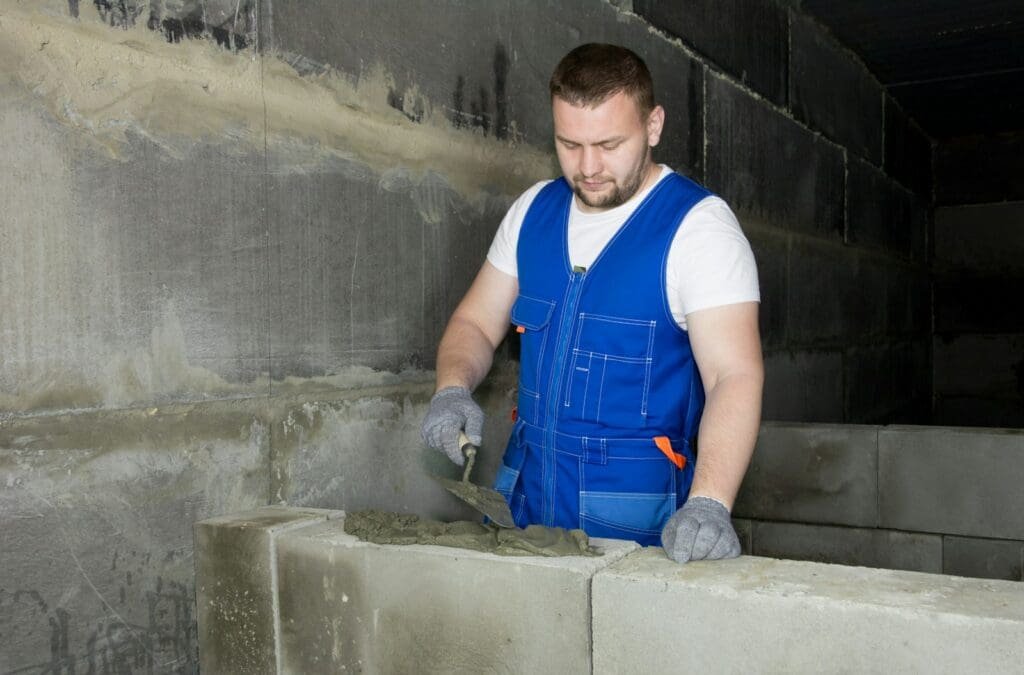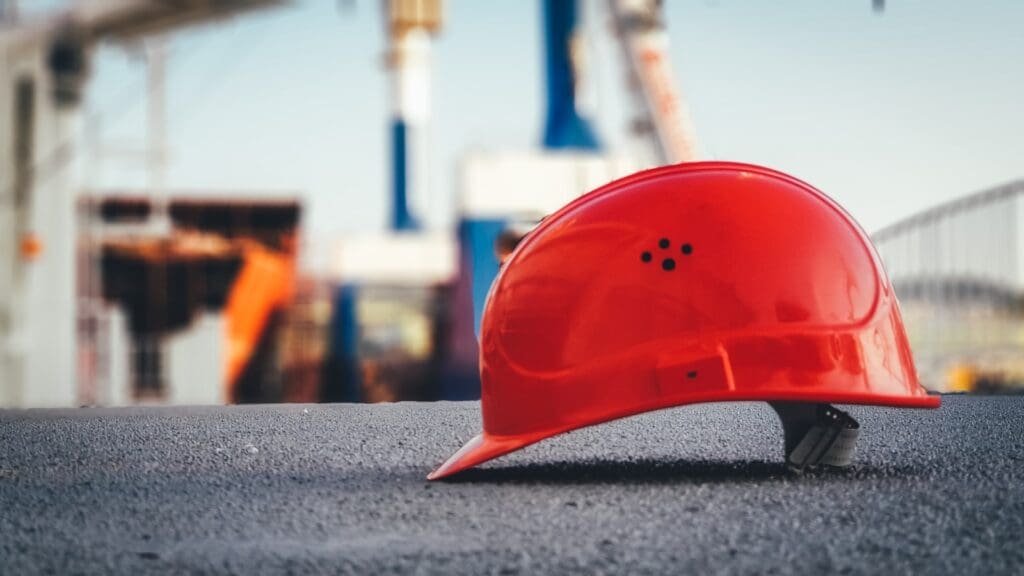Intro To Trowels and How They’re Used
Ever wondered how construction workers achieve those perfectly smooth concrete surfaces?
The answer often lies in a humble tool: the trowel.
Despite its unassuming appearance, the trowel plays an essential role in construction and masonry. In this article, we’ll explore what a trowel is, its main parts, the different types available, and their specific uses in various construction tasks.
By the end, you’ll understand why this small tool is indispensable on any construction site.
Let’s get started!
Table of Contents
Trowels and Their Uses in Construction

What is a Trowel?
A trowel is a small hand tool used in construction and masonry. Its primary function is to apply, spread, and shape materials like mortar, plaster, and concrete. Trowels are integral to creating smooth finishes and ensuring materials are evenly distributed.
Main Parts of a Trowel
- Blade: The flat or slightly curved metal part used for spreading materials.
- Handle: Attached to the blade, the handle provides a grip for the user.
Types of Trowels
Different trowels serve specific purposes in construction. Below are some common types:
Masonry Trowels
- Brick Trowel: Designed to spread mortar when laying bricks.
- Pointing Trowel: Smaller and used for fine details and pointing work.
- Bucket Trowel: Wide-bladed trowel used to scoop mortar from a bucket.
Finishing Trowels
- Concrete Trowel: Flat with a slight curve, used for finishing concrete surfaces.
- Pool Trowel: Rounded edges to help finish concrete in pools and curved surfaces.
Uses of Trowels
Here are some common applications of trowels in construction:
Laying Bricks and Blocks
Trowels are used to spread mortar evenly between bricks and blocks, ensuring they stick together and align properly.
Finishing Concrete
Concrete trowels smooth the concrete surface before it fully sets, creating a polished finish.
Plastering
Trowels help apply and smooth plaster on walls and ceilings. Special plastering trowels are designed for this purpose.
| Type of Trowel | Main Use |
|---|---|
| Brick Trowel | Laying bricks |
| Pointing Trowel | Detail and repair work |
| Concrete Trowel | Smoothing concrete |
| Pool Trowel | Finishing curved surfaces |
Additional Uses of Trowels in Masonry

Pointing and Jointing
Trowels play an important role in pointing and jointing brickwork and stonework. Different trowels such as the Pointing Trowel and the Jointing Trowel are specially designed for these tasks.
- Pointing Trowel: Ideal for small-scale repair jobs, such as filling gaps and cracks.
- Jointing Trowel: Used to compact mortar between joints to improve the water tightness and strength of the masonry.
Tile Installation
Tile and margin trowels are essential tools for setting tiles. They ensure that the adhesive or thinset is evenly spread to avoid air gaps and ensure a strong bond.
- Notched Trowel: Used to spread tile adhesive evenly. The notches create ridges that help the tile adhere properly.
- Margin Trowel: Used for small, detailed work and for applying thinset in corners and tight spaces.
Structural Repairs
In addition to construction, trowels are also important in the repair and restoration of masonry structures.
- Gauging Trowel: Ideal for mixing small quantities of mortar and applying it in tight spaces or for precision work.
- Corner Trowel: Designed to smooth and shape the inside and outside corners of a surface, ensuring sharp, clean angles.
Specialty Applications
Certain types of trowels are tailored for specialized tasks within masonry and plastering work. These trowels often have unique shapes and sizes suited to their specific functions.
- Bucket Trowel: Not just for scooping, but also useful in applying and spreading mortar in large quantities.
- Finishing Trowel: Specifically used to create a fine, smooth finish on plaster or concrete surfaces.
Grouting
For jobs involving tile work, trowels are indispensable in the grouting process. These tools ensure that grout is applied evenly between tiles and that excess grout is removed efficiently.
- Grout Float: While not exactly a trowel, it’s used in a similar way to spread grout into the joints between tiles.
What Does a Trowel Do in Construction?
Pointing and Jointing
Trowels play an important role in pointing and jointing brickwork and stonework. Different trowels such as the Pointing Trowel and the Jointing Trowel are specially designed for these tasks.
- Pointing Trowel: Ideal for small-scale repair jobs, such as filling gaps and cracks.
- Jointing Trowel: Used to compact mortar between joints to improve the water-tightness and strength of the masonry.
Tile Installation
Tile and margin trowels are essential tools for setting tiles. They ensure that the adhesive or thinset is evenly spread to avoid air gaps and ensure a strong bond.
- Notched Trowel: Used to spread tile adhesive evenly. The notches create ridges that help the tile adhere properly.
- Margin Trowel: Used for small, detailed work and for applying thinset in corners and tight spaces.
Structural Repairs
In addition to construction, trowels are also important in the repair and restoration of masonry structures.
- Gauging Trowel: Ideal for mixing small quantities of mortar and applying it in tight spaces or for precision work.
- Corner Trowel: Designed to smooth and shape the inside and outside corners of a surface, ensuring sharp, clean angles.
Specialty Applications
Certain types of trowels are tailored for specialized tasks within masonry and plastering work. These trowels often have unique shapes and sizes suited to their specific functions.
- Bucket Trowel: Not just for scooping, but also useful in applying and spreading mortar in large quantities.
- Finishing Trowel: Specifically used to create a fine, smooth finish on plaster or concrete surfaces.
Grouting
For jobs involving tile work, trowels are indispensable in the grouting process. These tools ensure that grout is applied evenly between tiles and that excess grout is removed efficiently.
- Grout Float: While not exactly a trowel, it’s used in a similar way to spread grout into the joints between tiles.
Additional Uses of Trowels in Masonry
Screeding
Screeding is an essential step in construction that involves leveling and smoothing out a surface before its final finish. Trowels used in screeding help achieve a uniform substrate for further construction work.
- Screed Trowel: Often larger and broader than typical trowels, used to distribute and level large areas of wet concrete or plaster.
- Straightedge: Sometimes used in conjunction with screed trowels for guided leveling of the surface.
Stucco and Decorative Finishes
Applying stucco and achieving various decorative finishes require specific types of trowels designed to handle these unique materials and artistic techniques.
- Stucco Trowel: This trowel features a broad, flat blade ideal for spreading stucco evenly over walls and ensuring a smooth finish.
- Texturing Trowel: Often used to create textures and patterns in plaster, giving an artistic or finished look to surfaces.
Epoxy Applications
Epoxy is becoming more common in construction and flooring, demanding specialized trowels for its application.
- Epoxy Trowel: Characterized by a flat or notched blade designed to evenly spread epoxy resin, ensuring a smooth and consistent application.
Refining Concrete Surfaces
Beyond initial finishing, more advanced trowels are used to refine concrete surfaces for various functionalities.
- Edging Trowel: Used to create smooth, rounded edges on concrete slabs, preventing chipping and adding a polished look.
- Groover Trowel: This trowel is designed to cut control joints into wet concrete, which helps control cracking as the concrete cures and settles.
Types of Trowels Based on Material and Design
Different construction tasks require trowels made from various materials and designs to ensure durability and efficiency.
Material Types
The material of a trowel’s blade significantly influences its performance and application.
- Steel Trowels: Standard for most troweling jobs, steel blades are durable and effective. Stainless steel versions resist rust and wear better.
- Plastic Trowels: Lightweight and often used for applying more delicate materials, like certain plasters or adhesives that might react with metal.
- Composite Trowels: Made from advanced materials like carbon fiber or fiberglass, these are typically used for specialized tasks requiring lighter or non-reactive tools.
Design Variations
The design of a trowel can also be tailored to fit specific tasks more effectively.
- Notched Blades: The notches help ensure even spread and adherence, particularly useful in tile and adhesive applications.
- Rounded Blades: Ideal for smoothing out seams and finishing curved surfaces, such as pools and decorative elements.
- Flexible Blades: Designed to provide some give, allowing for a more consistent application over uneven surfaces or for delicate plaster work.
Key Takeaways from Trowels and Their Uses in Construction
The importance of trowels in construction and masonry tasks cannot be overstated. With a wide range of variations in design, materials, and types, these essential tools play vital roles in everything from the laying of bricks to the application of plaster and grout.
Furthermore, understanding the primary function and accurate usage of different trowels such as brick trowel, pointing trowel, bucket trowel or concrete trowel can significantly increase effectiveness and efficiency in construction projects.
It’s also essential to note the importance of material types and design variations in trowels to suit different tasks.
Frequently Asked Questions – FAQs
What are the uses of a trowel in construction?
Trowels are primarily used for applying, spreading, and shaping materials like mortar, plaster, and concrete. They’re vital for creating smooth finishes and ensuring materials are evenly distributed in tasks like brick laying, concrete finishing, plastering, pointing, and jointing.
What are the types of trowels?
There are various types of trowels for specific construction tasks. These include masonry trowels like brick, pointing and bucket trowels, finishing trowels like concrete and pool trowels, and others used in pointing, tile installation, structural repairs, and grouting.
What factors influence the choice of trowel?
The choice of a trowel depends primarily on its intended use. Factors to consider include the type of material it’ll be used with, the specific task at hand, and the trowel’s material and design. For example, a notched trowel is suitable for tile adhesive while a steel trowel is ideal for most troweling jobs.






